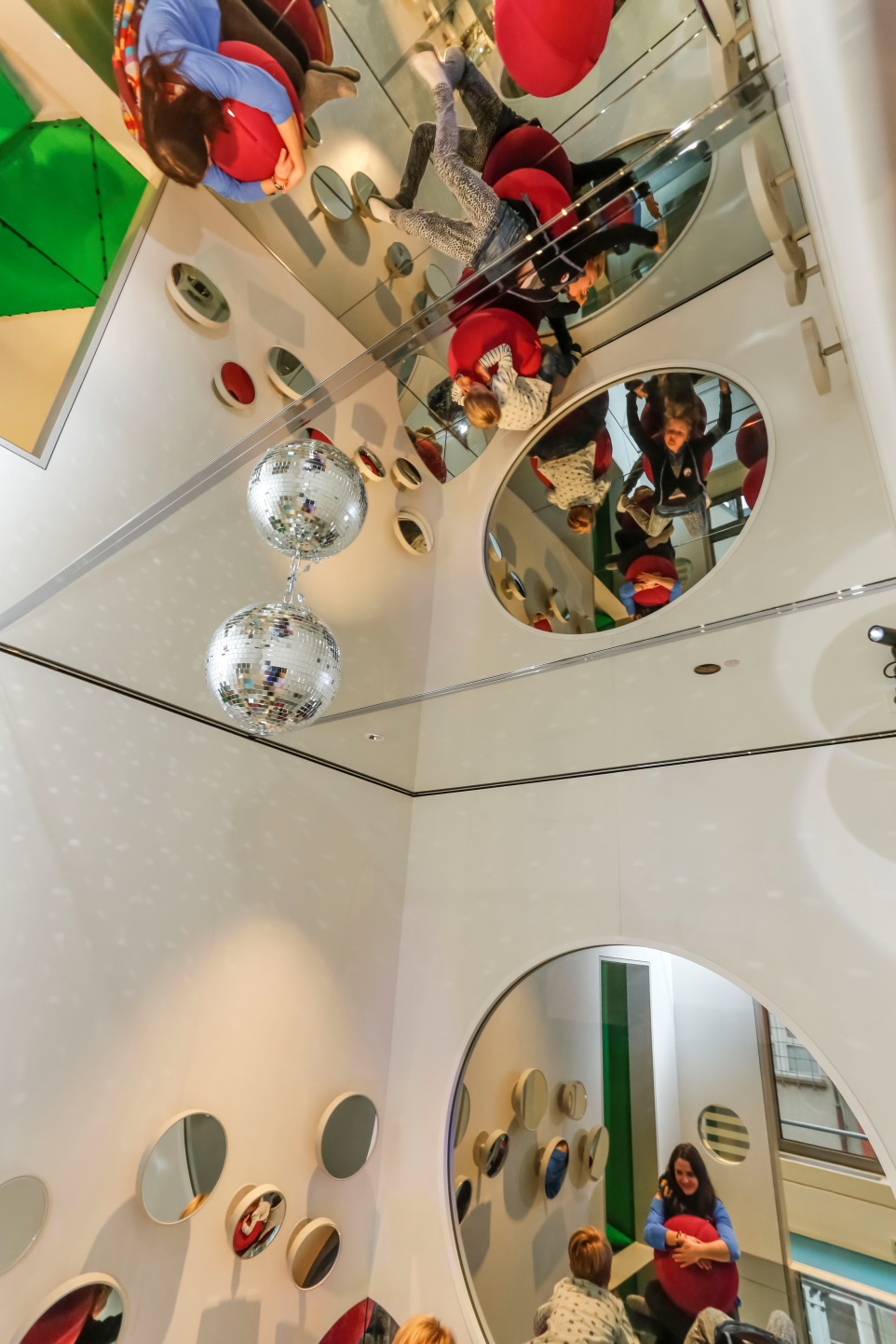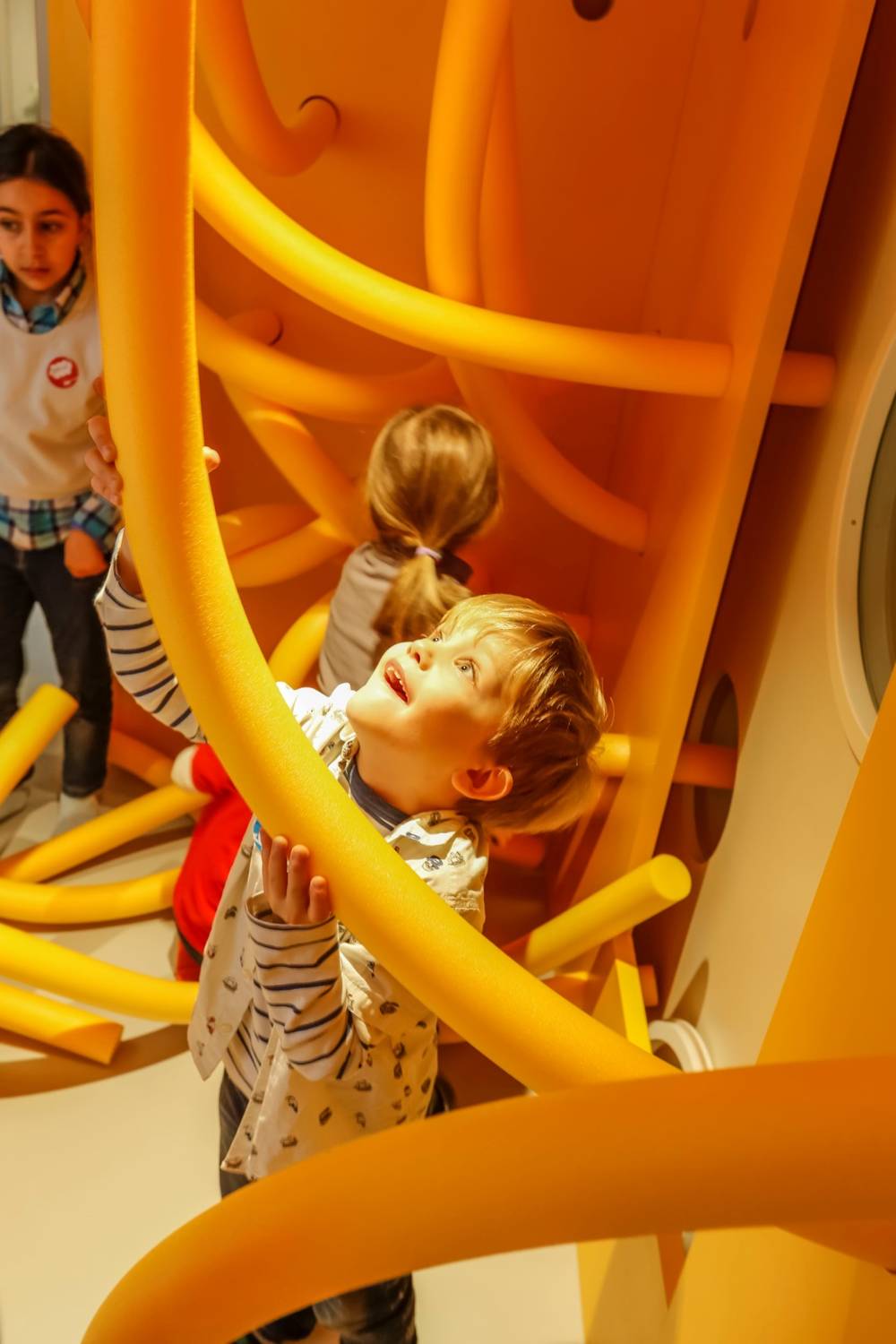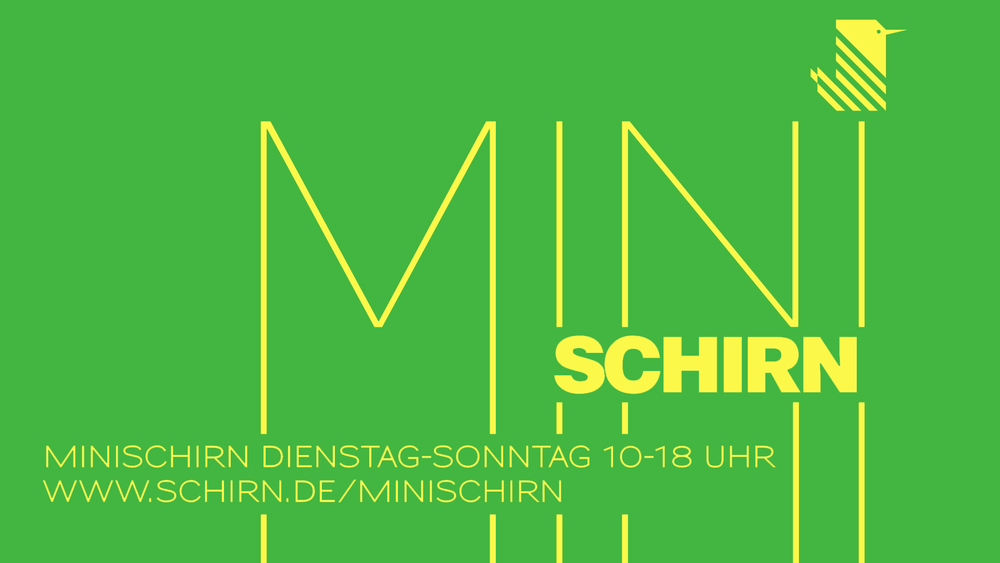Experiencing colors, folding walls, mixing light and a whole lot more besides: For the last year, kids have been doing this and much more each day at the MINISCHIRN, the multi-award-winning experience zone for children at the SCHIRN.
The project started almost three years ago when the book store in the SCHIRN foyer closed its doors once and for all. The idea back then was to transform the narrow empty space across two floors into the home of the new MINISCHIRN – a permanent space where experiencing aesthetic principles was quite literally to become child’s play. The substantive concept for this was developed by the SCHIRN’s art education section, in particular by Simone Boscheinen.
The plan was to link the MINISCHIRN space with a red thread in terms of shape, color and structure, starting with simple regularities, such as the primary colors, which became more complex from one room to the next. It was to be a hands-on area where the children could try everything out for themselves. The visitors, aged 3–8 years, were first and foremost to have fun, with aesthetic insights simply a welcome by-product.
The MINISCHIRN establishes a new format in Germany’s exhibition landscape: a permanent play and learning trail with a design that enables children to approach art independently.
Atelier Markgraph, Agentur für Kommunikation im Raum, was brought on board as the experienced partner to handle the architectural end of designing the project. The two storeys were linked by the idea of a seemingly futuristic tree-house, thus translating the teaching concept into built architecture. On the lower storey, there was much free space into which the pattern generator, the marble track and the image drum were then integrated – each of which enables kids to explore the principles of cause and effect.
Experience aesthetic principles and physical laws
A shadow theater encourages children to perform plays they have themselves dreamed up. The color tunnel then leads visitors upstairs, where the color lighthouse marks the start of a series of elaborately designed rooms. In the Slotting Room, the Light-and-Shadow Room, the Mirror Room and the Folding Room, it’s all about a hands-on experience trying things out. In graphic terms, the figures created by Christian Bitenc (again combinations of shapes, colors and structures) allude to the rooms’ respective functions. All of this blends harmoniously into the SCHIRN – whose only permanent installation is thus the MINISCHIRN.

Children who visit the MINISCHIRN can playfully experience aesthetic principles and physical laws. The emphasis is on their needs, and they alone define the speed in which they make their discoveries. Soon after the MINISCHIRN opened, the successful concept of gaining insights hands-on won countless awards, combining experience and insights.
Art is approached playfully
It started with the 2015 Red Dot Award in the “Communications Design” category, the jury going on the record saying: „Inside a treehouse-like architecture, a play and learning trail offers a fun way to experience the ABC of creativity and art first-hand. Individual spatial installations and experimentation stations allow a physical experience of artistic strategies such as irritation or transformation. MINISCHIRN establishes a new format in Germany’s exhibition landscape: a permanent play and learning trail with a design that enables children to approach art independently.”

MINISCHIRN then won the Art Directors Club contest in the category “Kommunikation im Raum – Permanente Themenausstellung” and the golden CommAward in the category “Der Raum”. It went on to win the FAMAB Award bestowed by the eponymous association, which stated in explaining the prize that the “extremely unusual concept” and its careful focus on the target group enables the latter “to experiment with art and creativity, so that art is approached playfully”.
And most recently it won the German Design Award 2016, with the MINISCHIRN picking up a Special Mention in the “Excellent Communications Design, Interior Architecture” category. Here, it was the architectural idea of the tree-house, the reduced and abstract formal vocabulary and the playful experience of creativity and art that convinced the jurors.
What is most important, however, is the appeal the facility has had to the 400-plus kiddies groups and over 10,000 individual visitors that have flocked to the MINISCHIRN in the first year of its existence, some of them coming several times. It is they who show that the concept works successfully.
